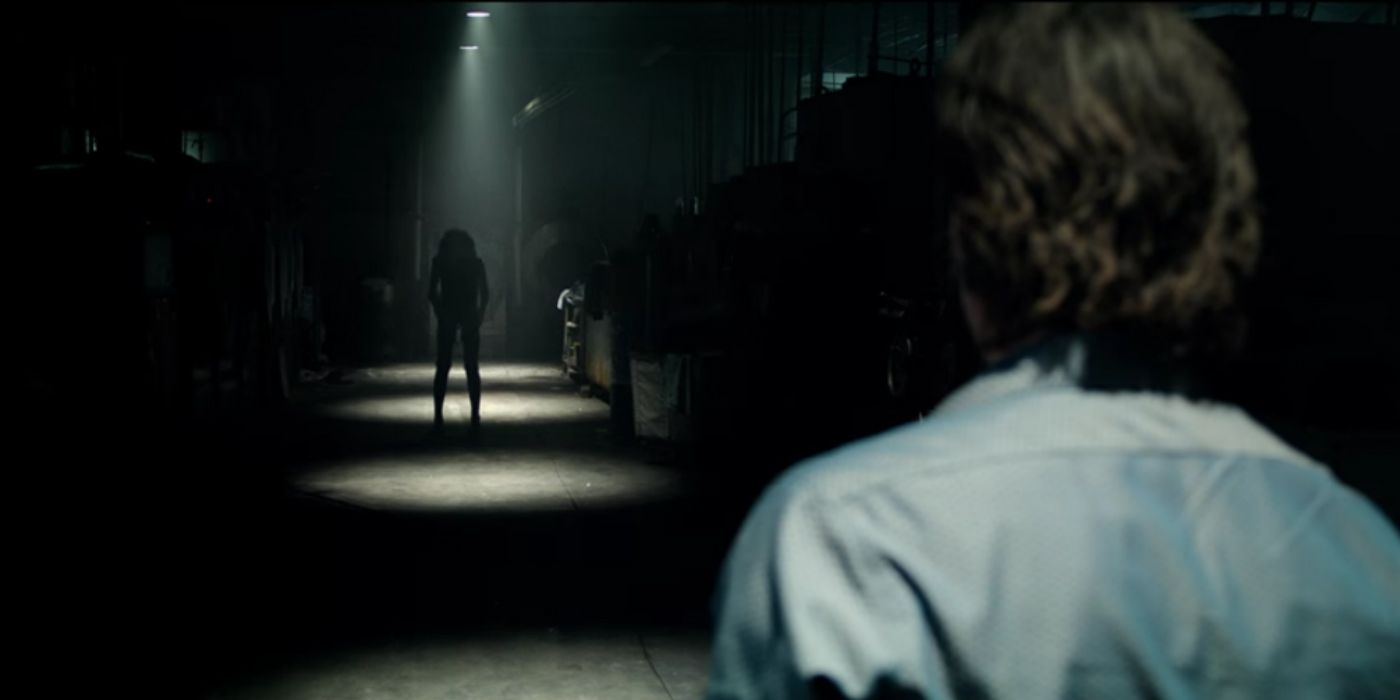Here’s the origin story of Lights Out evil spirit Diana explained. In 2013 director David F. Sandberg and his wife Lotta Losten created a short called Lights Out, which featured Losten as a woman stalked by a spirit that can only be seen in the light. It’s an intensely creepy short film that became a viral hit after its online debut and Sandberg later signed on to turn it into a feature-length horror film.
The Lights Out movie arrived in 2016 and grossed nearly $150 million worldwide. Needless to say, this did wonders for Sandberg’s career and he quickly moved on to helm 2017 prequel Annabelle: Creation, which is a spinoff set in The Conjuring universe. The film was another huge success and received solid reviews – which isn’t always the case for Conjuring spinoffs. His most recent movie was superhero comedy Shazam!, which is one of the best-reviewed movies in the DC Extended Universe.
Click the button below to start this article in quick view.
The Lights Out movie did a good job expanding on Sandberg’s original short film and featured a solid cast that included Teresa Palmer and Maria Bello. Expanding the premise to feature-length almost meant fleshing out the light adverse demon, who is dubbed Diana in the film. Diana is a spirit who haunts the Wells family, though daughter Rebecca (Palmer) initially passes Diana off as the imaginary friend of her mother Sophie, who suffers from depression; Rebecca changes her mind after she narrowly survives an encounter with Diana.
Rebecca’s investigations lead her to learn the truth about Sophie and Diana’s relationship in Lights Out. It turns out when they were both young they were admitted to the same psychiatric hospital, with Diana having supposedly led her father to commit suicide. Diana latched onto Sophie as a friend but she also suffered from a skin disease that made her very sensitive to bright lights. The hospital staff tried to cure her with therapy that involved exposing her to harsh lights, which backfired when it killed her.
In death, Diana’s spirit tethered herself to Sophie and has been with her since childhood, and later caused the death of her husband when he tried to get her help. Lights Out reveals Diana’s motive is to kill anybody seeking to get Sophie treatment, which includes her children. While light scares her off, towards the end of the film she can be seen via black light as a thin woman with horrible skin burns. David F. Sandberg intended to portray Diana as an embodiment of Sophie’s depression, though the film’s ending accidentally proved controversial in this regard.
The ending of Lights Out sees Sophie realize Diana is linked to the world through her, so to save her children she commits suicide. Some read the unfortunate subtext that Sophie “freed” her family from the burden of her depression by taking her own life, but Sandberg – who has suffered from depression himself – quickly stated this wasn’t the message at all. Lights Out originally ran longer and had another ending where Diana returns, which rendered Sophie’s sacrifice pointless; test audiences hated this epilogue, so it was trimmed to the current version.

